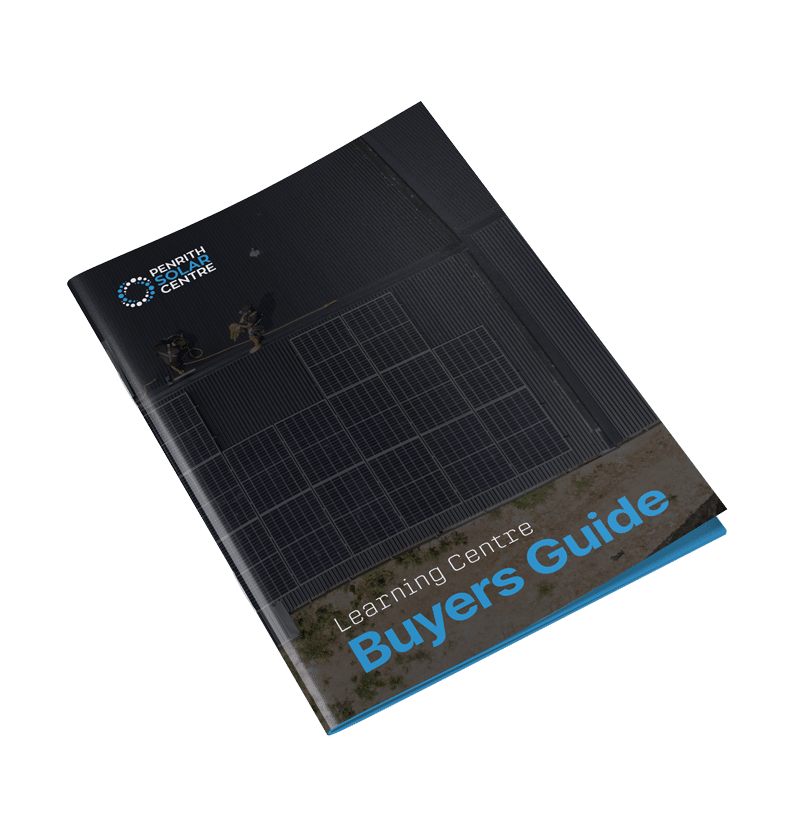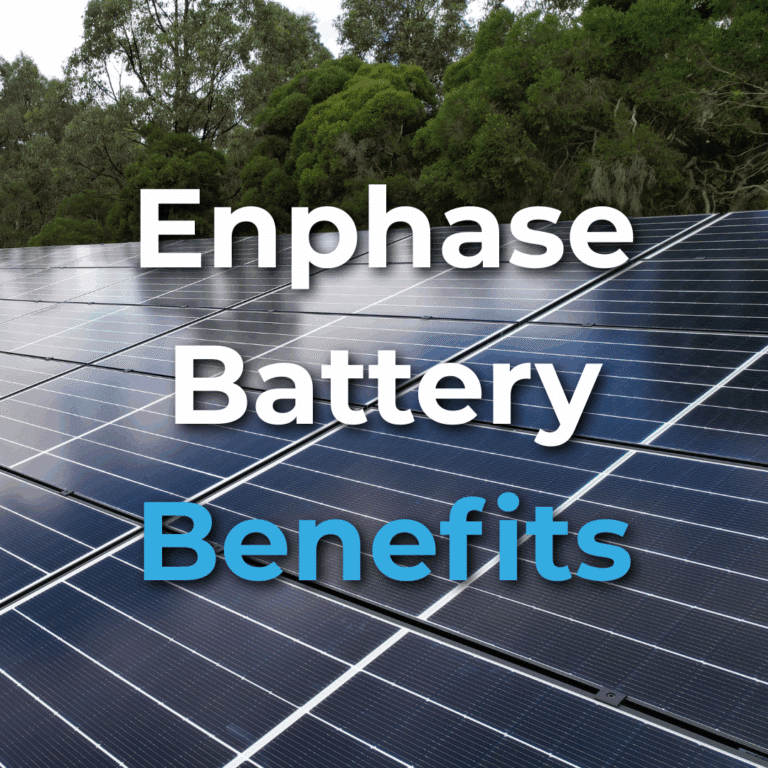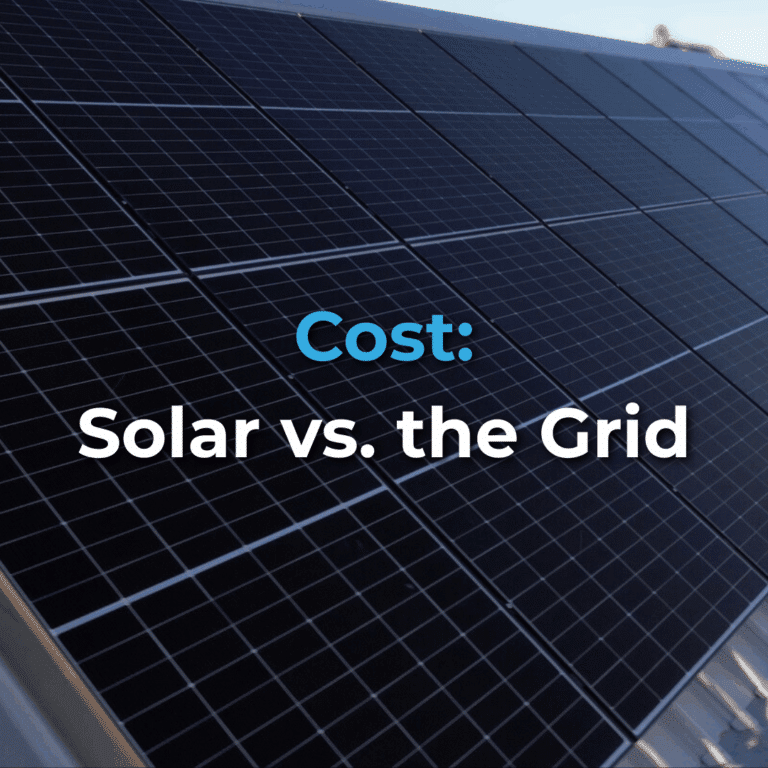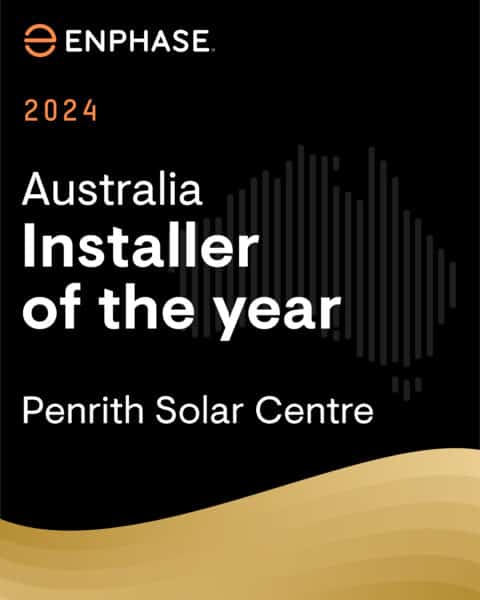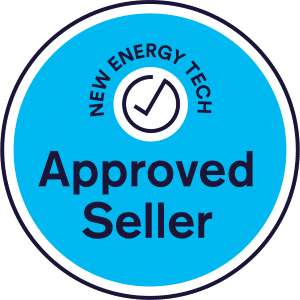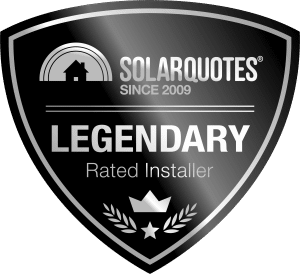Updated July 23, 2025
Whether it’s an Enphase battery or a glass teapot with a removable infuser, a critical question you’ll have for every product you’re shopping for is this: how much does it cost?
Well, in the case of an Enphase IQ Battery 5P for your new or existing solar array, it depends.
Can’t say for sure what that glass teapot will set you back.
A simple Google search will return a variety of prices for an Enphase IQ Battery 5P. The Enphase IQ Battery 5P typically ranges from as low as $5,000 to over $10,000. Why is that?
Installation costs and additional components. Plain and simple. The low costs you see on other websites are for the battery price alone and don’t include installation or the cost of the IQ Controller.
In this article, you’ll learn about the factors that contribute to calculating the cost of an Enphase battery.
- Why Does the Cost of an Enphase IQ Battery 5P Vary?
- How Many Enphase Batteries Do You Need?
- Enphase IQ Battery 5P and Energy Consumption Patterns
- Additional Considerations While Shopping for Quotes
By the end of your time here, you’ll be a confident shopper who knows what questions to ask a solar provider and why.
Why Does the Cost of an Enphase IQ Battery 5P Vary?
As we mentioned in the introduction, the cost of the Enphase IQ Battery 5P varies, sometimes wildly, from competitor to competitor.
The price difference comes down to:
- The cost of additional components.
- Installation costs you need to get your system up and running.
Cost of Additional Components: The cost of adding an Enphase battery to an existing system is higher because more technology is needed to get the system up and running.
When you install an Enphase microinverter solar system, there is a $1,200 piece of equipment called an electrical distribution board (we get ours from a company called iBoards, located right here in Australia).
This piece of equipment houses the Enphase IQ Gateway, which monitors the electricity harvested by the solar panels and delivered to the main switchboard.
This information is sent to the Enphase Enlighten app to help you monitor and maintain your system. The iBoard is manufactured by iBoards, but it contains Enphase tech, the IQ Gateway.

The iBoard is necessary when you install an Enphase microinverter solar system on your roof without a battery.
When installing an Enphase IQ Battery 5P to an existing Enphase solar system, the iBoard needs to be removed and replaced with a piece of technology called the Enphase IQ Controller.
The IQ Controller makes it possible for the Enphase battery to monitor the solar panels on the roof, the home, and the electrical grid. It directs traffic, so to speak, for the system. Much in the same way an iBoard does when an IQ Battery with Controller is not present.
The IQ Controller houses everything the iBoard houses, including the IQ Gateway. The IQ Controller features a Smart Switch, the IQ Gateway, and circuit protection. The IQ Controller detects disruptions from the grid and seamlessly switches from grid to battery backup power.
It looks a lot like one of the IQ Batteries:
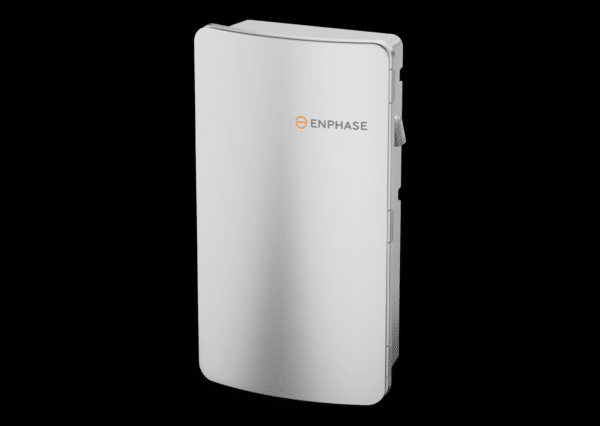
The cost of the IQ Controller when purchased alone can range from $2,273.70 to $3,100.
At PSC Energy, we offer the IQ Controller as a line item that’s included in the cost of your Enphase IQ Battery 5P. That’s one reason why our price for the Enphase IQ Battery 5P is typically higher than that of our competitors.
If you’re interested in learning a bit more about iBoards and why we work with them, you might want to check out the following article titled, What Are iBoards?
Cost of Installation: The cost of installation is a significant factor in determining the pricing of Enphase batteries.
At PSC Energy, the cost of installation is fixed per day and factored into your total cost for the battery.
When all the components of a solar system, including the battery, are installed together, the cost is reduced because it’s all done at once.
When you add a battery later, you’re paying for installation costs for an additional day of labour. It costs more to get a crew to your home for another day of work, which includes removing the iBoard and replacing it with an IQ Controller.
PSC Energy is a comprehensive, in-house solar installation service. We take care of you from initial enquiry to powering up your newly installed solar system. I’m mentioning it here because it’s unusual in this industry; the costs are all-inclusive.
One price covers everything you need. Not only the equipment, but also the installation.
If you’re interested in learning a bit more about what it’s like to work with an in-house installer, you might want to check out the following article titled, In-house Installers vs. Subcontractors: Which is Better?
How Many Enphase IQ Batteries Do You Need?
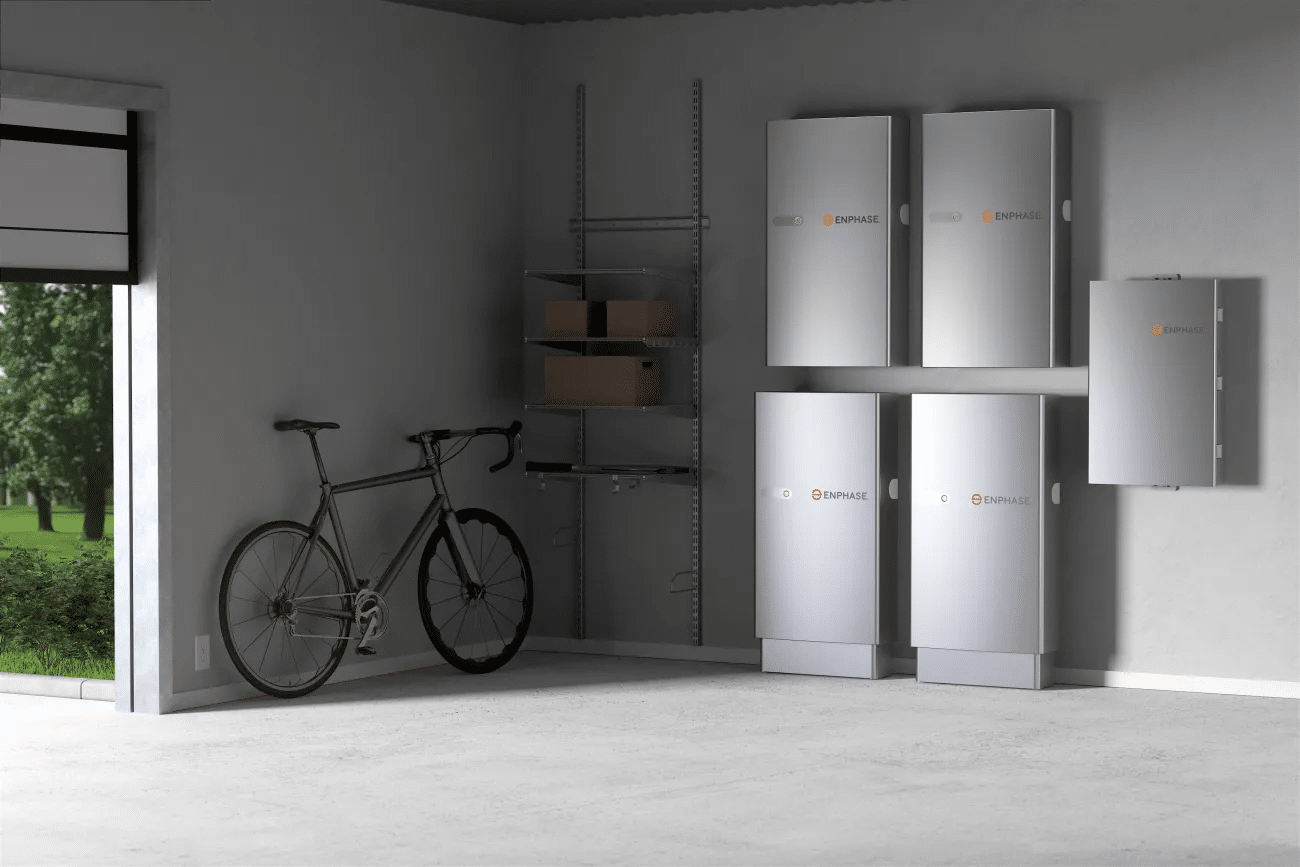
Your energy consumption patterns determine the cost of your system, including the cost of the batteries you install and the timing of their installation. The total price for each household will be different because each household’s needs are unique.
How much electricity do you need? Before we delve into that, we’ll cover some vocabulary commonly used in the solar industry when discussing batteries.
Stacking Batteries:
Enphase batteries are stackable. This is an industry term that describes connecting two or more solar batteries to optimise energy storage for your needs.
In Australia, there’s only one Enphase battery available: the Enphase IQ Battery 5P. It’s a 5kWh battery.
Two batteries will give you 10 kWh, three will provide you with 15 kWh, and you can probably guess what stacking four together will get you.
When shopping for a solar battery, consider kilowatts and kilowatt-hours. It’s the unit of measurement for the cost of electricity.
Battery Capacity:
When discussing the size of a solar battery, the term “capacity” refers to the amount of electricity a battery can store. Therefore, the capacity of the Enphase IQ Battery 5P is 5kWh.
The capacity of a battery is measured in kilowatt hours (kWh). This is a measurement of how much energy can be stored in the battery.
Energy and power are not interchangeable terms when discussing electricity, although many writers on solar panels often use them interchangeably. Power is electricity in motion, like water flowing through a hose. Energy is like electricity when it’s stored, much like water in a bucket.
Got a couple more terms for you. Hang in there.
Battery Power:
Now that you understand the difference between power and energy, you need to understand the difference between continuous power and peak power.
Continuous power is the power released from the battery for typical, everyday applications. It’s a steady stream of power from the battery to your appliances.
Peak power is the ability to juice the system for large appliances that need a little more electricity to get started.
In the case of the Enphase IQ Battery 5P, the energy capacity is 5 kWh. The power rating is 3.84 kW of continuous power or a peak output power of 7.68 kW (3 seconds) or 6.14 kW (10 seconds).
Because the Enphase battery has a relatively low energy capacity, we recommend stacking two together when purchasing and installing them for optimal performance.
This will double the energy capacity to 10 kWh and double the power output to 7.69 kW of continuous power or 15.36 kW when peak power is required.
We recommend this because the Enphase battery, though one of the best on the market and one we stand behind, has about half the energy and power capacity of other batteries in its class. It’s why two of them cost about the same as a Powerwall.
If you’re interested in learning a bit more about IQ Batteries, you might want to check out the following article titled, Top 10 Features of the Enphase IQ Battery 5P.
Enphase IQ Battery 5P and Energy Consumption Patterns
Now that you understand the terms related to the battery, you are ready to evaluate your energy consumption patterns. It’s a phrase from the solar industry that we like to use, referring to how you use electricity in your home.
Any skilled solar installer will thoroughly discuss your energy consumption patterns with you before figuring out the best placement for your solar panels. The same goes for installing an Enphase battery.
The number of Enphase batteries you should buy, stack, and install depends on your energy consumption patterns, which are measured in kilowatts and kilowatt-hours. And those numbers will vary from household to household.
Have you taken the time to determine when you are typically at home and how much electricity you use during that period? The answers to the following questions are part of your energy consumption patterns.
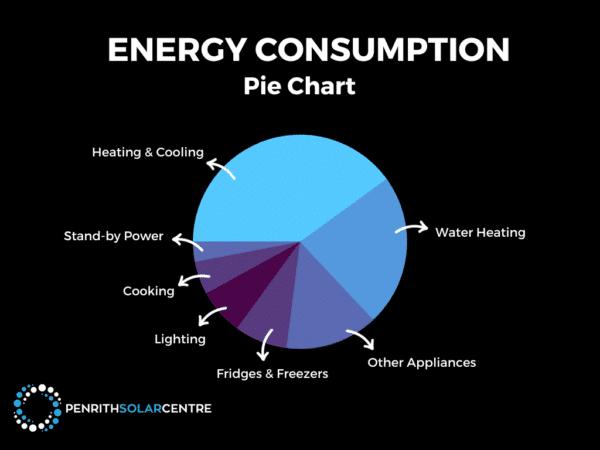
Daily Routine: What does your typical daily routine look like? Are you usually at home when the sun is shining, or does your energy usage peak in the evening? For most people, it’s in the evening.
Appliance Usage: Consider the appliances you use and the times you operate them. Are you running energy-intensive appliances during the day, or do you primarily use them in the evening?
Seasonal Changes: Consider the seasons. Your heating and cooling requirements vary with the weather. For example, you may use air conditioning more in the summer, affecting your electricity consumption differently than in the winter. Also, your lighting preferences will change with the season. You’ll need light after 5 PM in the winter.

Seasonal Activities: Consider any seasonal activities that may affect your electricity usage, such as the increased use of a pool pump in the summer.
The energy consumption patterns of most households tend to follow a similar pattern. Homes in the Sydney metro area typically use electricity in the morning and the late afternoon to evening hours, as residents often work or attend school during the middle of the day.
When shopping for batteries, you also need to know your energy needs for when your home is “idling.” Idling is when the household is in minimum standby mode. The refrigerator is always running, for example. If you have a swimming pool, that will also require constant energy.
More batteries will cost you more upfront. If your energy consumption needs are met with more batteries, you’ll save money in the long term.
Please understand that a battery is not a one-time, fixed-cost commodity. The biggest mistake that customers make when shopping for a solar battery is treating it as if it were a commodity.
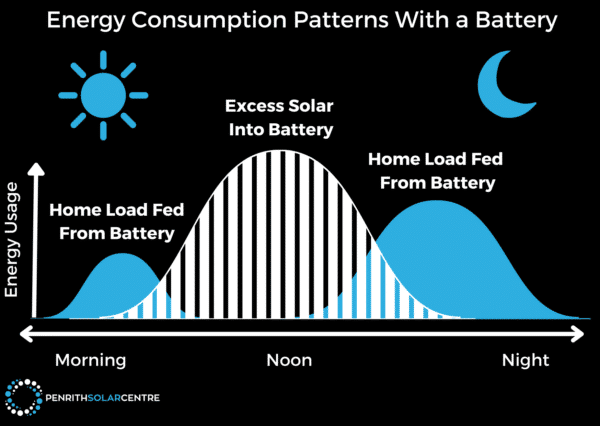
When pricing batteries for your solar system, you need to calculate the cost in terms of the money you will save over the battery’s and solar system’s lifetime. This will change from household to household because everyone’s needs are unique.
When a battery is a part of your solar system, it will affect how efficiently the entire system operates for you. With a battery, your solar system will save you more money than solar panels working alone. It’s a significant upfront cost, but the payout is bigger in the long run because it reduces your reliance on the electrical grid for energy.
The less you rely on the grid, the lower your bills. And remember, the cost of electricity is rising.
If you’re interested in learning a bit more about how to save with solar, you might want to check out the following article titled, Self-Consumption: How to Increase Solar Energy Use.
Ready to go solar? Click here.
Additional Considerations While Shopping for Solar Battery Quotes
As you enter the marketplace, there are a few things to watch out for from other installers.
Australian subcontractors install many solar systems. You need to consider this when pricing batteries, especially something as sophisticated as an Enphase system. It’s important to choose a battery from a company with offices in Australia, which Enphase has.
It could end up costing you quite a bit to service or replace a battery (or any solar equipment) if the brand you purchase doesn’t have local offices. How can a company without offices in Australia fulfil your warranty claims? How will they replace or repair faulty equipment?
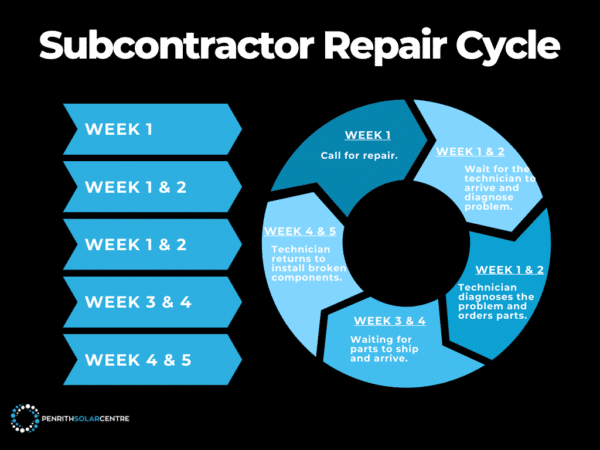
Why is that? Warranties. You need a company with customer service in Australia. How will you get a malfunctioning battery replaced if it was installed by a subcontractor hired by a corporation on the other side of the world? The battery might cost less upfront, but there’s risk involved in those savings.
Some subcontractors will also add extra charges. Especially in more complicated setups or retrofits.
- When dealing with an AC-coupled battery, such as Enphase, are any additional pieces of equipment, like an IQ Controller, included in the cost?
- How detailed is your quote?
- What additional charges are not included in the price of the battery and installation?
For a detailed examination of in-house installers like PSC Energy compared to subcontractors, you’ll want to read this unbiased look into that very topic titled, In-house Installers vs. Subcontractors: Which is Better?
Is an Enphase IQ Battery 5P Worth the Cost?
It depends.
While the cost of adding an Enphase IQ Battery 5 P to an existing solar system or a new one may vary from installer to installer for numerous reasons, there are several factors that affect the price. We understand how complex and confusing it can be. You should now have a better understanding of how those costs are calculated.
At PSC Energy, we want you to get the most out of your investment, and the long-term return on investment is something that significantly impacts the upfront cost. The best advice we can offer is this: move slowly and ask lots of questions.

If you’re interested in learning more about what to consider when purchasing a solar battery, you might want to check out this article titled, Enphase IQ Battery 5P Review.
FAQ: Enphase IQ Battery 5P Price
How much does the Enphase IQ Battery 5P cost in Australia?
The cost of an Enphase IQ Battery 5P can range from just over $5,000 to more than $10,000. The lower prices you find online usually only include the battery itself. They do not include installation or the cost of essential components like the IQ Controller. A complete system from an in-house installer like PSC Energy includes everything, equipment, installation, and setup, so you know exactly what you’re paying for.
Why do prices for Enphase IQ Battery 5P vary so much?
Prices vary depending on whether you’re buying just the battery or a full system. If you’re adding a battery to an existing solar setup, you’ll need extra components like the Enphase IQ Controller. Installation costs also play a big role. Installing the battery during your initial solar system install costs less than doing it later, since you won’t need to pay for a second installation visit.
What extra components are needed for an Enphase battery installation?
If you already have an Enphase microinverter system, you probably have an iBoard that includes an Enphase IQ Gateway. To add a battery, the iBoard needs to be removed and replaced with the Enphase IQ Controller. This unit includes a Smart Switch, the IQ Gateway, and protection circuits. The cost of this part alone can range from $2,273.70 to $3,100. PSC Energy includes the IQ Controller in the total price for your battery installation.
How much does installation affect the cost of an Enphase IQ Battery?
Installation costs have a big impact. If the battery is installed with the rest of your solar system, it’s cheaper because everything is done at once. If you’re adding the battery later, you’ll pay extra for another full day of labour and for the removal and replacement of the iBoard with the IQ Controller. At PSC Energy, installation costs are fixed per day and included in your full quote.
How many Enphase IQ Battery 5P units do I need for my home?
It depends on your household’s energy usage and patterns. Each Enphase IQ Battery 5P has a 5kWh energy capacity. Most homes will benefit from at least two batteries, which gives you 10kWh of storage and doubles the available power output. Enphase batteries are stackable, so you can connect more than one to match your home’s needs.
What is the energy capacity and power output of the Enphase IQ Battery 5P?
The Enphase IQ Battery 5P has a total energy capacity of 5kWh. It can provide 3.84kW of continuous power, with peak output of 7.68kW for 3 seconds and 6.14kW for 10 seconds. When you stack two batteries, you get 10kWh of energy and a power rating of 7.69kW continuous or 15.36kW peak.
What does “stacking” Enphase batteries mean?
Stacking means installing more than one battery to increase storage capacity and power output. In Australia, only the Enphase IQ Battery 5P is available. It’s a 5kWh unit, so stacking two gives you 10kWh, three gives you 15kWh, and so on. This lets you customise your battery setup based on your household’s needs.
What are energy consumption patterns and why do they matter?
Energy consumption patterns describe when and how your household uses electricity. This includes your daily routine, the appliances you run, and how usage changes with the seasons. Understanding your usage, especially when your home is idling, helps determine how many batteries you need and how much solar energy storage is required.
How can I calculate the return on investment for a solar battery?
A battery is not a fixed-cost item. To understand its value, you need to consider how much money it will save you over time. This includes your energy usage, rising electricity prices, and how much energy your battery helps you store and use. A solar system with a battery reduces reliance on the grid, which lowers your bills in the long run.
Is it better to install a battery with solar panels or later?
It’s usually cheaper to install the battery at the same time as your solar system. That way, all the work is done in one visit, which reduces labour and installation costs. Adding a battery later costs more because it requires another full day of installation and may need upgrades like replacing the iBoard with the IQ Controller.
Should I choose an in-house installer or a subcontractor?
You should choose an in-house installer whenever possible. In-house teams like PSC Energy handle your entire installation from start to finish and offer consistent service. Subcontractors might not provide the same accountability or include all required equipment in the quote. They may also charge extra for complex installations.
Does Enphase have offices and support in Australia?
Yes. Enphase has offices in Australia, which helps with customer service, technical support, and warranty claims. Choosing a battery brand without local support can lead to long delays in service or even make it hard to replace faulty equipment. This is especially important when dealing with advanced systems like Enphase.
What should I look out for when comparing solar battery quotes?
Make sure the quote includes everything: the battery, the IQ Controller, installation, and labour. Some quotes only include the battery price without essential components or don’t mention added labour for retrofitting. Always ask if the price includes all required hardware and if the installer is using in-house staff or subcontractors.
Is the Enphase IQ Battery 5P worth the cost?
It depends on your energy needs, installation situation, and long-term goals. The Enphase IQ Battery 5P may cost more upfront—especially when adding it to an existing system—but it can improve your solar system’s efficiency and reduce your power bills over time. When properly sized and installed, it offers strong long-term value.

